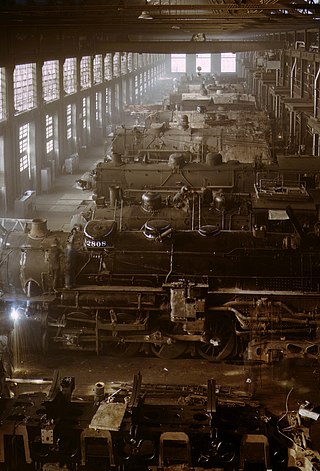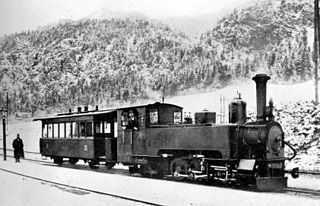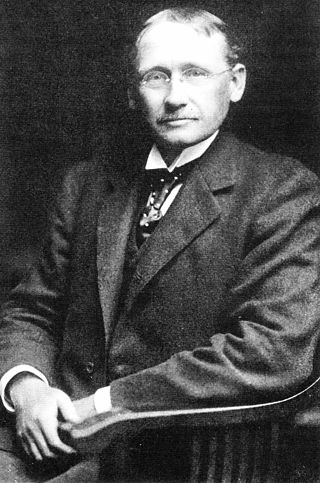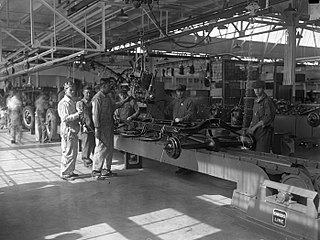This article has multiple issues. Please help improve it or discuss these issues on the talk page . (Learn how and when to remove these template messages)
|
The history of organizations describes the general history of the rise of the organization.
This article has multiple issues. Please help improve it or discuss these issues on the talk page . (Learn how and when to remove these template messages)
|
The history of organizations describes the general history of the rise of the organization.
Since earliest times humanity has endeavoured to develop the most appropriate systems of organization to meet the challenges of a particular era. Inevitably the systems of organization that developed were reflections of the wider values, tradition and general organization of society at that time, moulded by the necessity of withstanding threat and seeking to innovate whilst maximising benefits from existing resources. Human development has continually necessitated a corollary of human and organizational development designed to maximize effectiveness. This progression is indicative of a civilizing process that has continually asked humanity to reassess its relationship with itself and to increasingly value the welfare of both the individual and wider society as a whole. [1] The symbiotic relationship between strategic leadership and organizational structure necessary to success can be traced back to the beginnings of western civilization. Indeed, the very term strategic owes its etymology to the ancient Greek words for 'army' or a 'large body' and a 'leader'. In ancient Greece the 'Strategikos' was the leader of the army. [2]
In 1776 the political economist Adam Smith wrote on how specialization can boost human productivity enormously. [3] By specializing, people can use their talents, or acquire skill. And they can employ labour-saving machinery to boost production. [4] Smith's view was borne out by the effects of mass industrialization in the late 18th century which caused great change in how people worked and how work was organized. On this topic Lynda Gratton, the organizational theorist, describes the "fundamental and irreversible shift which changed the experiences of every worker." She states that prior to the Industrial Revolution, work was an "artisan activity engaged largely in the home, using long held and meticulously developed craft skills." According to Gratton these skills "began to be transformed as the manufacturing sector was developed and began to transcend the limits of artisanal production". [5]
The late 18th and early 19th century was a period where the artisan and the agricultural worker gave way to the burgeoning factory units that were beginning to emerge. The enclosure of vast tracts of commonage in the countryside facilitated a move from pastoral farming to grazing – forcing many from the land, often in dire circumstances. This growing trend of migration from the rural to the urban witnessed the growth of the metropolis, and the industrialized city. The growth of a mass society meant that the relationship with work was altered, it now became much more time centred and precise – a standardized approach was in the process of being developed. [6] [7]
Alongside the migration of workers to the new factories largely situated around energy sources and communication networks – coal deposits and canals etc. [6] [7] this period witnessed the emergence of global corporations situated in key centres such as London and Paris, as trade followed the flag in a wave of colonization. The shift from coal to oil as the primary energy source for industry coupled with the decolonization of empires in the 20th century would witness shifting paradigms in the power relationships between major states. The issue of empire is important in the sense that economic advantages accrued through imperialism were a cornerstone in the advent of modernity, and the enforced homogeneity achieved through Empire coupled with the technological improvements in transport and technology that it funded made the world a lot smaller and lot more similar. [8] [9] [10]
Whilst recognising the significant impacts that the Industrial Revolution had, Gratton states that the "real revolution" in people's working lives began in the mid-to-late-19th century when British scientists drove a culture of innovation with the ideas of organisational and technological restructuring based on changes in the energy that powered industry. Joel Mokyr [11] puts a timeframe of 1870-1914 on this "Second Industrial Revolution", the concept introduced by Patrick Geddes in his work Cities in Evolution. [12] According to Gratton: "Work became more regimented, more specialised. The workplace and the work schedule became more compartmentalised and hierarchical." Gratton states that this was 'the embryonic stages of Fordism – the rise of the engineer as the organiser of economic activity, and the decline of the artisan. [5]
Fordism, named after Henry Ford, is "a model of economic expansion and technological progress based on mass production: the manufacture of standardized products in huge volumes using special purpose machinery and unskilled labor". [13] The major advantages of this approach was that it cut down on the manpower necessary for the factory to operate, not to mention that it deskilled the labour itself, cutting down on costs of production. [14]
According to Gratton, "in this second Industrial Revolution, engineers redesigned factories to make employees fit into the production line. By doing so workers lost their autonomy, becoming simply as interchangeable as the parts they created". [5]
Whilst Fordism emerged in the United States, it was preceded in Europe by Taylorism. [15] Taylor's main objective was to improve economic efficiency, especially labor productivity. He analyzed how specific jobs might be done more efficiently. He broke down manual tasks into a series of components that could be measured. Peter Drucker who, during the 20th century was known as the 'father of modern management' said that Taylor was "the first man in history who did not take work for granted, but looked at it and studied it. His approach to work is still the basic foundation." [16]
Production methods based on Fordism are no longer the primary method of industrial production. There are three main driving forces behind the emergence of 'Post-Fordism.' They are the rising of new technologies, internationalization and the paradigm shift from Fordism to post-Fordism. Post Fordism is based on flexible production, rising incomes for polyvalent skilled workers and the service class and increased profits based on technological and other innovations. Also post-Fordism accumulation will be more oriented to worldwide demand, not so much on demand within a state. Post-Fordism is more demand than supply-driven. As a labour process, post-Fordism can be defined as a flexible production process based on flexible systems and an appropriately flexible workforce. [17]
The birth of modernity as it has been termed in the late 19th early 20th century presaged a period of incredible industrial, technical and intellectual advancement that was to completely alter mankind's relationship with and perception of time and space. Many of the technologies that we take for granted today can be seen as developments from scientific and technical breakthroughs achieved in the period between 1890 and 1920. The birth of the railroad (which dates back to the early 19th century), and later the automobile, was to lead to seismic changes in the manner and means in which the organization of the various units of human enterprise were to be restructured, from warfare to commerce. Mankind's new outer relationship with time would be best captured by the birth of the railroad [18] and our inner relationship with time through the development of modernist literature, with its stream of consciousness. [19] The parallel growth of industrial capitalism would lead to the identification of time as money. The speed of travel would see the subsuming of local time-zones into railway times. The American Civil War is regarded as the first modern conflict, as notwithstanding the massive casualties and periods of trench warfare, the mass movement of men and munitions by rail provided the genesis for the logistical capability that would contribute to the mechanization of warfare inevitability leading to the slaughter of World War I.
World War II represents something of a tipping point in terms of its impact on the development of industrial organization and leadership. Just as the conflict precipitated incredible technological advancements in areas such as radar, computing and the development of the jet engine so it was for leadership models, particularly in the areas of communications and efficiency. The primary models and experience of leadership and organizational structure for the post war leaders of the business world were from the military in WWII, with the majority of Post War managers drawing on their military training as a model for organizational development. [2]
Frederick Winslow Taylor's 1911 The Principles of Scientific Management paved the way for the recognition of management as a scientific subject, with the MIT Sloan School of Management opening in 1914. However, organizational theorists such as Charles Handy and Henry Mintzberg both decry the lack of leadership and management training in the post WWII period. Handy in particular records how in his early career as an executive he was forced to rely on his formal academic training in Roman and Greek Classics as grounding for his management training. [20] [21] It would not be until some-time after WWII that the education of executives would be addressed in a critical manner. This would in time give birth to the management guru, with major implications for the science and theory of management and organizational development. [2]
The growth of 'gentle commerce' interspersed with political and social thought processes to the degree that by the late 20th century, in a globalized interdependent economy, cooperation between nation states and trading blocs is the norm (notwithstanding the obvious aberrations of the rule); thankfully humanity has advanced beyond Clausewitz' dictum that decreed war as no more than politics in another manifestation [22] to the degree that it is no longer acceptable for Democracies to use force to achieve political aims. [1]
Against this developing socio-political backdrop, organizations have continued to evolve. The contemporary zeitgeist suggests the developed world is primarily governed by social democracies, is hugely interdependent whilst engulfed in a tidal wave of endemic technological innovation and advances that will carry it into uncharted waters. All this alongside a growing sense of awareness of a global environmental threat, diminishing supplies of carbon fuels coupled in all too many instances with an existential crisis, that asks what is it all about?
The examples and perspective in this section focusing solely on the United States may not represent a worldwide view of the subject.(February 2020) |
A prime example of progression from the antiquated hierarchical structures with its layers of middle management staffed by gate keepers congesting the flow of communications can be found in the 2008 Presidential Campaign conducted by Barack Obama. Obama's team harnessed the potential of social media to create a flat structure. Local activists were communicated with directly from campaign headquarters. Individuals became leaders in their own domain. They were able to access campaign material, and register supporters immediately upon accessing material provided online via the campaign website.
This innovative form of campaign allowed Obama to raise $750 million, primarily from small donors, along with registering one and half million volunteer campaign workers in twenty seven thousand campaign groups. However, following the appointment of Jim Messina as the campaign manager for the 2012 Presidential campaign the 2008 strategy was declared antiquated – indeed Steven Spielberg reportedly advised Messina to blow up the 2008 campaign it was so out of date.
In a future where any task that can be described as predictable or repetitive will invariably be delegated to forms of artificial intelligence, the old hierarchical command and control systems will become largely redundant. Success will be premised on speed and innovation, on the ability of organizations to synthesize real time information and perform strategic pivots that will allow immediate access to new opportunities. The 2012 Presidential election presaged how this may look in practice. Whilst the campaign remained grassroots oriented, continuing to harness social media, the engine behind the effort was a metrics driven campaign. The sheer magnitude of the data organizing effort was staggering, but all within one single comprehensive database. [23] [24]
In what was the largest political campaign in US political history, the technical staff utilized consumer data along with demographic information to devise a more accurate model of the electorate – in small slices. By taking cognizance of the 'Long Tail' of human preferences, [25] analysts were able to develop micro campaigns that targeted key demographic groupings that many had predicted would not vote due to the impact of the economic downturn and high unemployment that underscored the administration's failure to deliver a quality of prose in government that had been promised by the poetry of the campaign. By identifying who the voter actually was through data mining and attaching a support score of 1–100 for each individual voter, the campaign team were able to build a macro picture of the election by breaking it down in its component parts. [26]
The campaign itself became an evolutionary process designed to react to 'just in time information' that allowed the campaign to pivot in a new strategic direction to meet identified demand. [24] This development from rigid hierarchical structures to an infrastructure deliberately designed to support innovative, but empirical evidenced decision making, represents the future of organizational development. Steve Jobs spoke of the need for future organizations to be run by ideas not hierarchies. [27]

Industrial sociology, until recently a crucial research area within the field of sociology of work, examines "the direction and implications of trends in technological change, globalization, labour markets, work organization, managerial practices and employment relations" to "the extent to which these trends are intimately related to changing patterns of inequality in modern societies and to the changing experiences of individuals and families", and " the ways in which workers challenge, resist and make their own contributions to the patterning of work and shaping of work institutions".

Mass production, also known as flow production or continuous production, is the production of substantial amounts of standardized products in a constant flow, including and especially on assembly lines. Together with job production and batch production, it is one of the three main production methods.
An information society is a society where the usage, creation, distribution, manipulation and integration of information is a significant activity. Its main drivers are information and communication technologies, which have resulted in rapid growth of a variety of forms of information. Proponents of this theory posit that these technologies are impacting most important forms of social organization, including education, economy, health, government, warfare, and levels of democracy. The people who are able to partake in this form of society are sometimes called either computer users or even digital citizens, defined by K. Mossberger as “Those who use the Internet regularly and effectively”. This is one of many dozen internet terms that have been identified to suggest that humans are entering a new and different phase of society.

A factory, manufacturing plant or a production plant is an industrial facility, often a complex consisting of several buildings filled with machinery, where workers manufacture items or operate machines which process each item into another. They are a critical part of modern economic production, with the majority of the world's goods being created or processed within factories.

Industrialisation is the period of social and economic change that transforms a human group from an agrarian society into an industrial society. This involves an extensive re-organisation of an economy for the purpose of manufacturing. Historically industrialization is associated with increase of polluting industries heavily dependent on fossil fuels. With the increasing focus on sustainable development and green industrial policy practices, industrialization increasingly includes technological leapfrogging, with direct investment in more advanced, cleaner technologies.
The knowledge economy is an economic system in which the production of goods and services is based principally on knowledge-intensive activities that contribute to advancement in technical and scientific innovation. The key element of value is the greater dependence on human capital and intellectual property for the source of the innovative ideas, information and practices. Organisations are required to capitalise this "knowledge" into their production to stimulate and deepen the business development process. There is less reliance on physical input and natural resources. A knowledge-based economy relies on the crucial role of intangible assets within the organisations' settings in facilitating modern economic growth.

In sociology, industrial society is a society driven by the use of technology and machinery to enable mass production, supporting a large population with a high capacity for division of labour. Such a structure developed in the Western world in the period of time following the Industrial Revolution, and replaced the agrarian societies of the pre-modern, pre-industrial age. Industrial societies are generally mass societies, and may be succeeded by an information society. They are often contrasted with traditional societies.

The Second Industrial Revolution, also known as the Technological Revolution, was a phase of rapid scientific discovery, standardization, mass production and industrialization from the late 19th century into the early 20th century. The First Industrial Revolution, which ended in the middle of the 19th century, was punctuated by a slowdown in important inventions before the Second Industrial Revolution in 1870. Though a number of its events can be traced to earlier innovations in manufacturing, such as the establishment of a machine tool industry, the development of methods for manufacturing interchangeable parts, as well as the invention of the Bessemer process to produce steel, the Second Industrial Revolution is generally dated between 1870 and 1914.
Fordism is an industrial engineering and manufacturing system that serves as the basis of modern social and labor-economic systems that support industrialized, standardized mass production and mass consumption. The concept is named after Henry Ford. It is used in social, economic, and management theory about production, working conditions, consumption, and related phenomena, especially regarding the 20th century. It describes an ideology of advanced capitalism centered around the American socioeconomic systems in place in the post-war economic boom.

Scientific management is a theory of management that analyzes and synthesizes workflows. Its main objective is improving economic efficiency, especially labor productivity. It was one of the earliest attempts to apply science to the engineering of processes to management. Scientific management is sometimes known as Taylorism after its pioneer, Frederick Winslow Taylor.
Post-Fordism is a term used to describe the growth of new production methods defined by flexible production, the individualization of labor relations and fragmentation of markets into distinct segments, after the demise of Fordist production. It was widely advocated by French Marxist economists and American labor economists in the 1970s and 1980s. Definitions of the nature and scope of post-Fordism vary considerably and are a matter of debate among scholars.

Organizational theory refers to a series of interrelated concepts that involve the sociological study of the structures and operations of formal social organizations. Organizational theory also seeks to explain how interrelated units of organization either connect or do not connect with each other. Organizational theory also concerns understanding how groups of individuals behave, which may differ from the behavior of an individual. The behavior organizational theory often focuses on is goal-directed. Organizational theory covers both intra-organizational and inter-organizational fields of study.
An organizational structure defines how activities such as task allocation, coordination, and supervision are directed toward the achievement of organizational aims. An organizational structure is a system that outlines how certain activities are directed in order to achieve the goals of an organization.These activities can include rules,roles,and responsibilities. In addition: a system that outlines how certain activities are directed in order to achieve the goals of an organization.
Organizational behavior or organisational behavior is the: "study of human behavior in organizational settings, the interface between human behavior and the organization, and the organization itself". Organizational behavioral research can be categorized in at least three ways:

Operations management is an area of management concerned with designing and controlling the process of production and redesigning business operations in the production of goods or services. It involves the responsibility of ensuring that business operations are efficient in terms of using as few resources as needed and effective in meeting customer requirements.
The term information revolution describes current economic, social and technological trends beyond the Industrial Revolution.
Organizating or organising is the establishment of effective authority relationships among selected works, persons and work places in order for the group to work together efficiently, or the process of dividing work into sections and departments, which often improves the efficiency.

Industrial engineering is an engineering profession that is concerned with the optimization of complex processes, systems, or organizations by developing, improving and implementing integrated systems of people, money, knowledge, information and equipment. Industrial engineering is central to manufacturing operations.
The high performance organization (HPO) is a conceptual framework for organizations that leads to improved, sustainable organizational performance. It is an alternative model to the bureaucratic model known as Taylorism. There is not a clear definition of the high performance organization, but research shows that organizations that fit this model all hold a common set of characteristics. Chief among these is the ability to recognize the need to adapt to the surroundings that the organization operates in. High performance organizations can quickly and efficiently change their operating structure and practices to meet needs. These organizations focus on long term success while delivering on actionable short term goals. These organizations are flexible, customer focused, and able to work highly effectively in teams. The culture and management of these organizations support flatter hierarchies, teamwork, diversity, and adaptability to the environment which are all of paramount success to this type of organization. Compared to other organizations, high performance organizations spend much more time on continuously improving their core capabilities and invest in their workforce, leading to increased growth and performance. High performance organizations are sometimes labeled as high commitment organizations.
The Angang Constitution, also known as An-Steel Constitution or Constitution of the Anshan Iron and Steel Complex, refers to a set of basic experiences of enterprise management summarized by China's Anshan Iron and Steel Company (鞍山钢铁公司) in the early 1960s. This "Constitution" was formed in 1960.